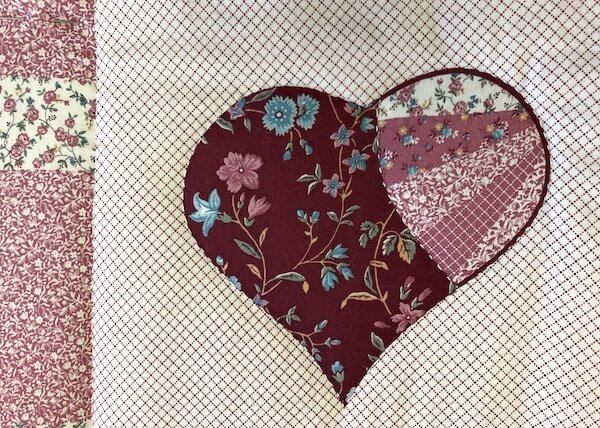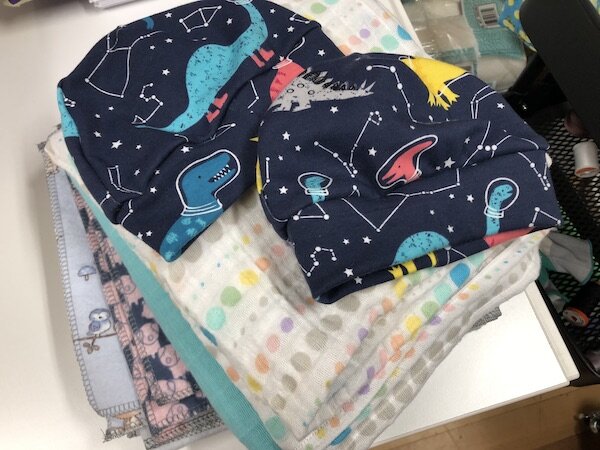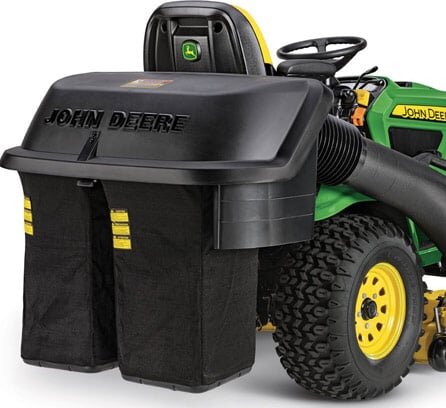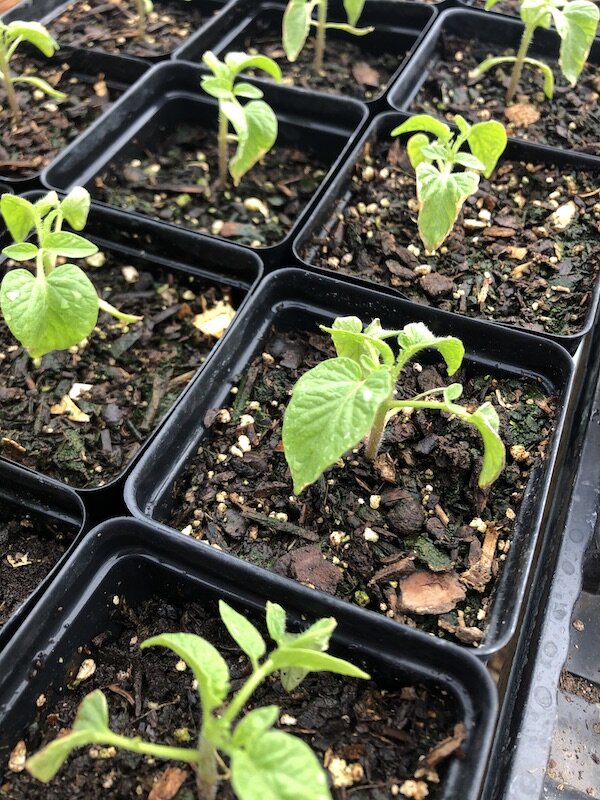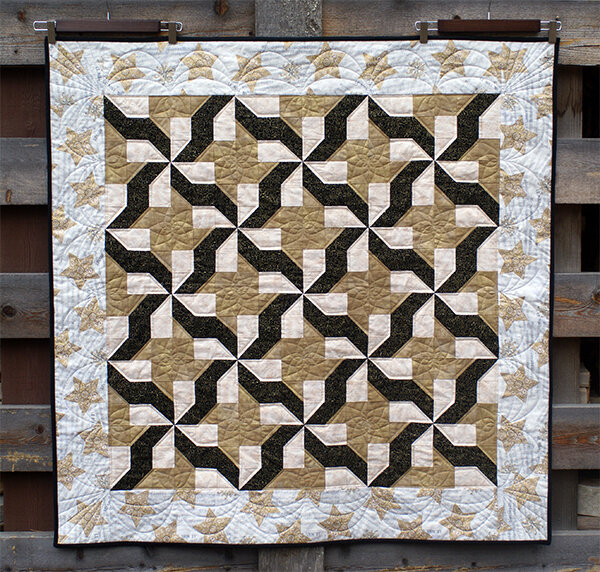I have one of the first-generation Janome coverstitch machines. This particular model has been plagued with problems—so much so that I doubt Janome will ever recover their share of that market now that other manufacturers have come out with their own coverstitch models. Thank goodness for the internet and for people willing to share their experiences. When I joined the coverstitch group on Facebook, I discovered that many Janome coverstitch owners had to raise the feed dogs. I opened the machine, oiled it thoroughly (it was tight and noisy), adjusted the feed dogs as directed, and put the machine back together. That helped considerably, but I had still had issues with the tension. The machine works well on thicker cotton and woven fabrics, but when it came to hemming lighter, slinkier knits, I had all sorts of problems.
Are you wearing a T-shirt or other knit top? Look at the hem. It probably looks similar to the one in the photo above. A coverstitch has several variations, but often consists of two needles with a looper thread that swings back and forth between them. Unlike a serger, however, the coverstitch has no knife and doesn’t cut the fabric. On the front side, the stitch looks similar to what you would get using a twin needle on a sewing machine. Done correctly, a coverstitch “covers” the raw edge of the hem. The kicker is that you have to sew with the front side of the garment facing you, and hope that you’re catching the hem properly underneath.
The machine balked at hemming lighter knits like rayon/spandex. The most noticeable issue was “tunneling,” where the looper thread pulls too tightly on the backside and creates a raised ridge of fabric between the two needles on the front. Common sense would dictate lowering the looper tension to keep that from happening—except that it happened even when the looper tension was on 0. Can’t get much lower than 0.
The other problem was that I could never keep the hem from shifting out of place as I sewed. I tried washable hem tape, a hem guide attachment (not cheap) and a few other fixes, with mixed success.
I’ve got a chart showing suggested thread tension, looper tension, stitch length, and differential settings for different weights of knit fabric. I had the presser foot pressure knob at the suggested 3/8” height. Before I hemmed the two tops I made on Saturday, though, I went back to the hive mind for any additional suggestions. I ran across a post on one forum, authored by someone with industrial coverstitch experience, in which she commented that most domestic coverstitch machines come out of the factory with the presser foot pressure set way too high. On industrial machines, apparently, the foot pressure is very light. Hmmm.
I took some scrap fabric to the machine and started messing around with the presser foot pressure. By the time I was done—and happy with the stitch I was getting—the presser foot pressure knob was set at a height of 5/8”. The tunneling disappeared, although it came back as soon as I set the looper tension higher than 0. (I might be able to fix that if I took the machine apart, but I think I’ll just live with it.) The best—and most unexpected—benefit, though, was that the hem no longer shifted out of place as I sewed. I was able to keep my left index finger on the fabric as it fed into the machine, feeling the hem edge underneath and guiding it between the needles. (I can’t see it, remember?) Hemming was almost effortless, where before, it had been an unpleasant fight with the machine. And it required nothing more than a quick press with an iron to set the hem in place.
Replacing this machine doesn’t make much sense given that I only use it for one specific task. I know what adjustments I need to make to get the results I want. I suspect, though, that a lot of these Janome machines—the 900cpx and the 1000cpx, which is the model I have—were either junked or donated to thrift stores. (The 2000cpx model doesn’t have quite as many issues.) If you can find one cheap, they are worth having once they are adjusted properly.
Depending on the interest, I might teach a coverstitch class at the quilt store in the future.
****************************************************
I’ve got an appointment to leave my Janome (speaking of) sewing machine at the quilt store in Spokane on my way to Alaska/Seattle and pick it up on my way back. Part of the reason I bought the Janome coverstitch machine was because my 6600P sewing machine has been such a joy. This is its yearly service appointment. I won’t take it to the Janome dealer here in Kalispell. The owner is a class A jerk. I stopped in there a few weeks ago to get some quilting thread and happened to let slip that it was for my Bernina Q20. He doesn’t hesitate to trash talk the brands he doesn’t carry, and he made sure I knew what a poor decision he thought it was that I had bought that machine. (Belittling a customer is an interesting marketing technique. I am not sure how he stays in business.)
And Tera and I have a quilting trip planned for September. She mentioned that she was going to Garden of Quilts in Salt Lake City and asked if I wanted to come with her. I’m going to fly down for two days and meet her there. We both signed up for an English paper piecing class on Thursday afternoon, have tickets to the special event with Jenny Doan (Missouri Star Quilt Company) on Thursday night, and tickets to the quilt display on Friday. The quilts are hung up in a botanical garden and Tera says it’s quite a sight.
















